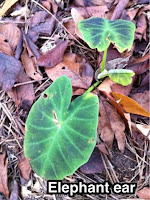I used to love pansies until I moved to Georgia. You can't really grow pansies in South Florida, but here, they are all you see in commercial plantings from November to April. To make matters worse, people often use these pansy color mixes that combine bright colors at random like a bad '80s outfit. When I ran across some pansies in a lovely shade of red, though, the color was so pretty and so unusual, that I took home a six-pack to brighten up my beds. Maybe I'll have to re-evaluate my view of pansies.
I really love how violas spill out of a pot, so this year I filled up two small pots for my patio. I remembered planting bulbs among the pansies while working at Callaway Gardens, so I decided to try giving my violas an extra punch by planting some tulip bulbs first (tulips like to be planted at a depth that's three times the size of the bulb) and adding the violas on top. Tulips really prefer colder climates, but there are a couple of species that tolerate Macon's mild climate better than others. Of course, those were not the kinds of tulip bulbs they actually sold at Lowe's or Home Depot around here (I'll have to remember to order bulbs next fall), but at least the bulbs were half off when I bought them. Even if they don't emerge beautifully in the spring, at least I only spent a couple of dollars on my experiment.
 |
| I planted the tulip bulbs (left) under the violas (right). Here's hoping they emerge as pretty as the picture! |
I couldn't imagine our first Christmas in our house without a few lights outside and a wreath on the door. I thought I might be creative and make my own wreath this year, but in the end I decided to save time when I saw a lovely fresh wreath at Home Depot. With a mind on the budget, we kept our outdoor Christmas decorations simple, but I'm pleased with how it turned out.
.JPG) |
| Merry Christmas! |













.JPG)
